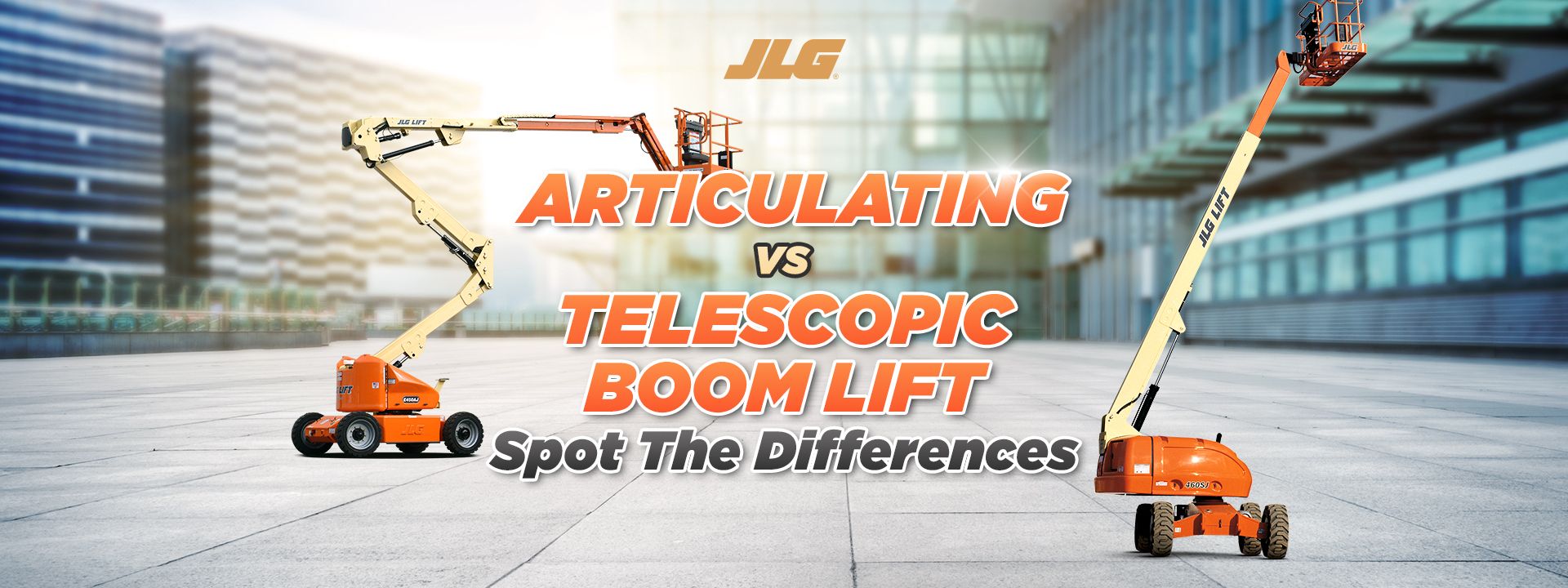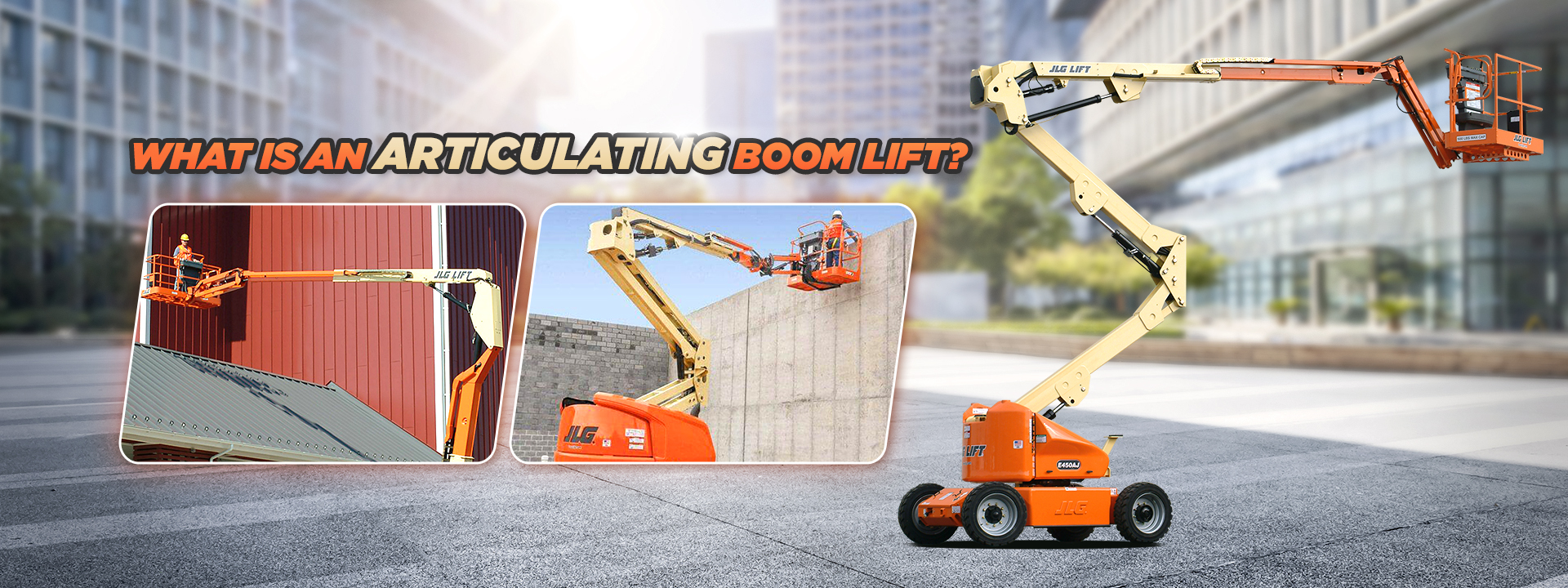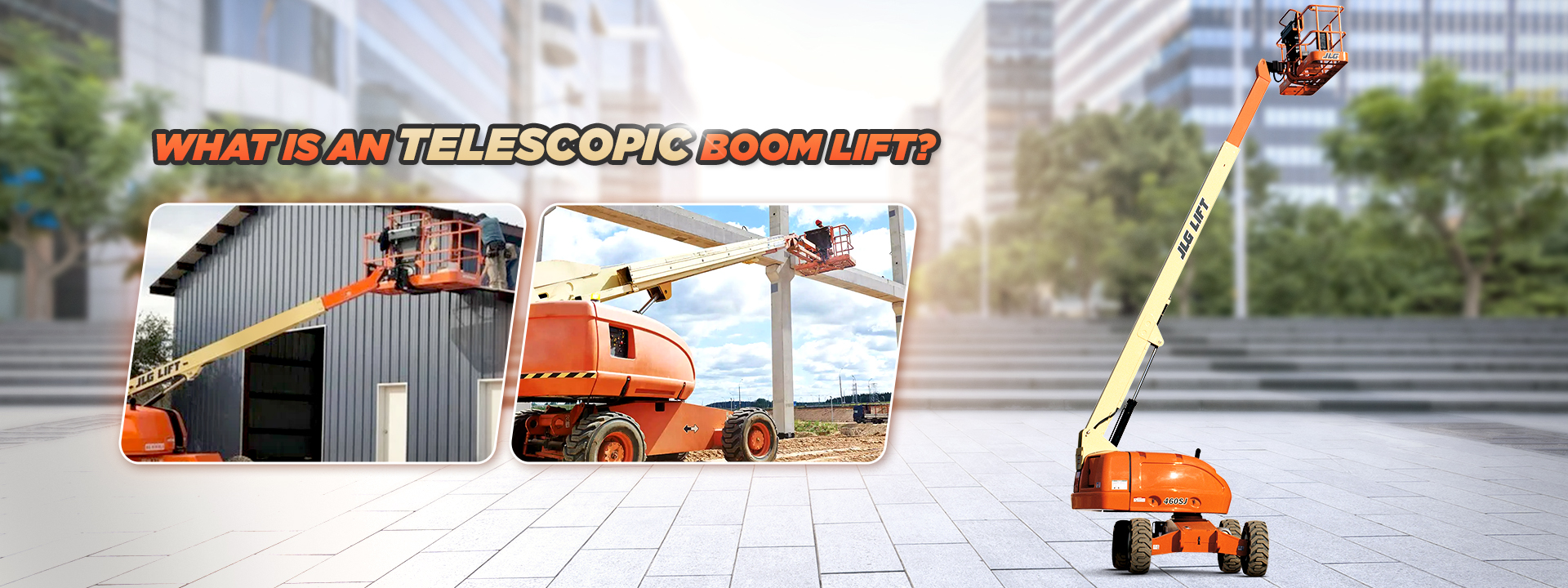
What are the differences between articulating and telescopic boom lift? Those of you who are still relatively unfamiliar with heavy equipment may not really understand these differences. Perhaps, the information below will help you in better understanding!
Boom lifts are aerial devices that functions for elevating workers and materials to challenging heights and locations, ensuring access to difficult-to-reach work areas. Not just limited to large-scale projects, boom lifts are also incredibly useful in tasks like roofing, tree trimming, residential construction, and electrical work.
For your information, the flexibility of boom lifts is impressive! Some models are capable of extending upwards of 56 feet or more.
Now, the most commonly used boom lifts are the articulating and telescopic types. Each is equipped with a hydraulic arm capable of extending a considerable distance. When selecting a boom lift, the primary factors to consider are the required height of the work platform and the necessity to maneuver around obstacles.

Articulating boom lifts are specialized aerial devices designed for accessing challenging and remote areas. The standout characteristic is their articulated arm and segmented boom sections. They feature multiple joints, usually two or three, akin to the flexibility of a finger, which is why they are often referred to as "knuckle booms."
The majority of these models are equipped with a 360-degree base turntable, allowing them to pivot in any direction. Such feature allows the arm to maneuver the work platform around and over obstacles effortlessly. It finds application in situations where workers must access confined or challenging-to-reach areas or need to frequently change their position.
Now, the tallest articulating boom lift available today boasts an impressive lift height of 150 feet and a reach of 75 feet.
This kind of boom lift is suitable for these points:
Below is the lift of articulating boom lift’s advantages:

A telescopic boom lift, alternatively referred to as a straight boom or stick boom, comprises a boom that extends in a linear trajectory from the boom hoist, an attachment made to the lift chassis. While some models have a maximum height capability of 185 feet, the average maximum range is approximately 150 feet.
These mobile elevated work platforms (MEWPs), often referred to as aerial lifts, find utility when work crews need to operate at significant heights or access areas obstructed by rugged terrain.
They are well-suited for a wide range of tasks, including industrial maintenance, electrical work, painting, glazing, bridge inspection and construction, tree trimming, and any job that necessitates access to multi-story buildings.
The telescopic boom extends rapidly, and in some configurations, the lift can be driven with the boom fully extended.
This kind of boom lift is suitable for these points:
Below is the lift of telescopic boom lift’s advantages:
Aspect | Articulating Boom Lift | Telescopic Boom Lift |
Suitability | Inaccessible and congested areas | Maximum height tasks, challenging terrain, material lifting |
Advantages | Maneuverability in tight spaces, adjustable for various tasks | Function in confined spaces, high maximum height, stability, transportability |
The initial phase in the process of selecting a boom lift involves evaluating the job site. It's essential to ascertain which type of boom lift aligns most effectively with the demands of the task and the necessary reach.
Additionally, it's crucial to consider any obstructions present in the work area. Nonetheless, the process of choosing the most suitable boom lift can sometimes be daunting. Thus, "refer to this boom lift checklist for making the right choice:
You have to consider what kind of boom lift is needed, by understand the key difference of two types. If the needs are more into horizontal and specific, you can choose articulating boom lifts. Because it is suitable for maneuvering around specific locations or obstacles.
While, if the needs are more into vertical or horizontal but less obstacle, the best choice is telescopic boom lifts. Because the maximum horizontal and vertical reach of telescopic boom lifts is 185 feet.
Do you encounter challenging outdoor terrain or operate within an indoor warehouse? Outdoor construction locations with ample space and reach would benefit most from telescopic boom lifts. While, if you encounter an indoor usage, the articulating boom lift is the best choice.
Articulating boom elevators are highly suitable for indoor tasks due to their ability to traverse confined pathways and spaces. They can be employed for surveillance purposes within warehouse environments characterized by the presence of piles of inventory, as well as for maintenance tasks including plumbing or ceiling repair.
The conditions of the job site alongside location have a significant impact on the boom lift you choose. Additionally, the type of labor that will be performed will influence the boom lift you need. Additionally, accessories are critical to the operation of the boom lift.
When selecting a crane lift, the power source becomes a critical consideration. A diesel engine may be more suitable for outdoor tasks, whereas an electric lift is more suitable for indoor operations.
When considering this aspect, you should know that the articulating boom's form is the most conspicuous distinction between these two categories of lifting equipment.
The pivot points of these devices enable both upward and downward movement, facilitating access to confined areas or difficult-to-reach surfaces. In contrast, telescopic platforms extend transversely.
This aspect of selection is in line with how you choose a lift for indoor and outdoor needs. If you prefer indoors, then it is better to use a lift with a track. If you prefer to be outdoors, then you should use a lift with tires.
Consider the stowed height when deciding whether or not to store the lift. Whatever your choice, you must adjust the storing place.
Various attachments are compatible with boom platforms, depending on the task at hand. Below is the list:
Boom lifts, like all other types of aerial lifts, can be risky if not operated properly. In order to mitigate the likelihood of accidents as well as injuries, abide by the subsequent seven guidelines:
So, those are the differences between articulating and telescopic boom lift! For consulting more about aerial device, perhaps it is better to rely o TRAKNUS. Contact us here!

When working at heights, boom lifts are the right machinery to use. Th...
Read More
Currently, companies must carry out the production, logistics, and dis...
Read More
Forklifts are useful for transporting goods in factories, warehouses,...
Read More
UPS (Uninterruptible Power Supply) is essential equipment to support c...
Read More